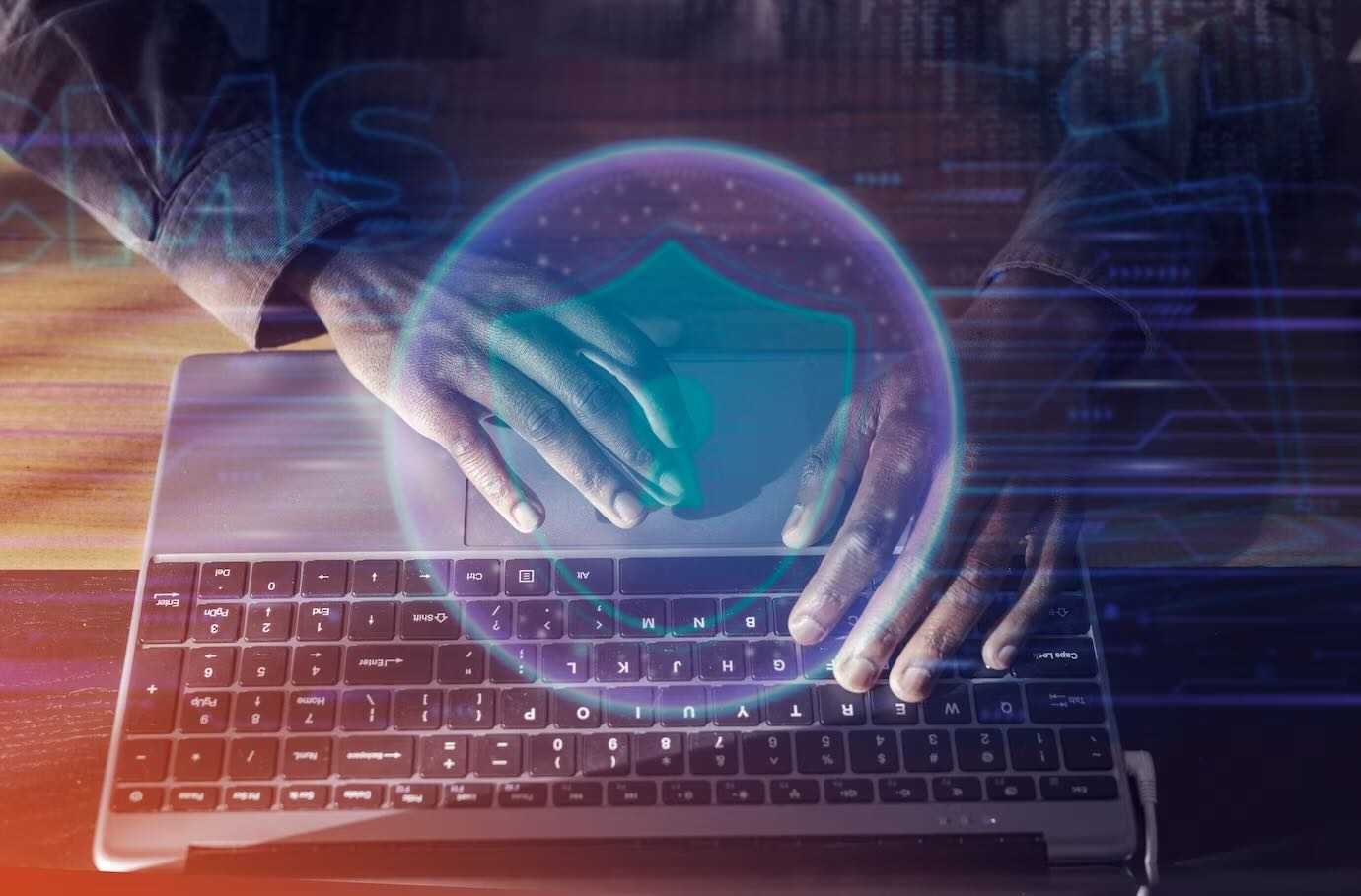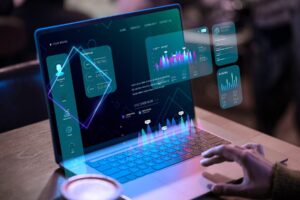Discover the power of PR in marketing. Learn about the benefits & tools....
Read MoreTop 10 Digital Forensics Strategies

Digital forensics is a critical discipline in cybersecurity, encompassing a range of strategies that investigators employ to uncover, analyze, and mitigate cyber threats.
As our digital landscape evolves, so do the techniques and tools employed by cybercriminals. In this article, we delve into the top 10 digital forensics strategies, exploring the methods and technologies that empower cybersecurity professionals to unravel complex incidents and secure our interconnected world.
Top 10 Digital Forensics Strategies
In the relentless pursuit of cybersecurity, digital forensics stands as a bastion against cyber threats. It’s a field where meticulous investigation meets cutting-edge technology, and where the ever-evolving landscape of cybercrime demands strategic adaptability. From real-time analysis to dissecting malicious code, these strategies form the arsenal that defenders wield to safeguard digital realms. Let’s embark on a journey through the top 10 digital forensics strategies, unraveling the methodologies that secure the virtual frontier.
Live Analysis in Cyber Forensics:
Live analysis, also known as live forensics, is a cyber forensic strategy that involves the real-time examination of a computer system or network while it is still operational. The objective is to gather volatile data and information from running processes, open network connections, and other active elements. Live analysis is crucial for capturing data that may be lost during the shutdown of a system.
Tools Used:
- EnCase
- FTK (Forensic Toolkit)
- Autopsy
- Volatility
- Wireshark
- Tcpdump
- Sysinternals Suite (includes tools like Process Explorer, Process Monitor)
- RegRipper
- Netstat
- Memoryze
Static Analysis in Cyber Forensics:
Static analysis, in the context of cyber forensics, refers to the examination of non-changing elements of a computer system, file, or network. It involves the scrutiny of files, metadata, and system logs without actively running or executing any processes. This method is crucial for understanding the state of a system at a specific point in time and is often used for evidence preservation and documentation.
Tools Used:
- EnCase
- Autopsy
- Forensic Toolkit (FTK)
- Sleuth Kit
- Bulk Extractor
- RegRipper
- ExifTool
- PEiD (PE Identifier)
- Forensic Toolkit (FTK)
- YARA
Network Forensics in Cyber Forensics:
Network forensics involves the monitoring, capturing, and analysis of network traffic to identify and respond to security incidents. It aims to uncover evidence related to cyber attacks, unauthorized access, and other malicious activities occurring within a network. Network forensics helps investigators understand the scope of an incident, trace the origin of attacks, and gather evidence for legal proceedings.
Tools Used:
- Wireshark
- Tcpdump
- NetworkMiner
- Snort
- Bro (Zeek)
- Nmap
- Security Information and Event Management (SIEM) Systems (e.g., Splunk, ELK Stack)
- Tshark
- Suricata
- NetFlow Analyzers
Memory Forensics in Cyber Forensics:
Memory forensics involves the analysis of the volatile memory (RAM) of a computer or system to extract and examine artifacts left by running processes, applications, and the operating system. This forensic technique is crucial for uncovering malicious activities, identifying malware, and understanding the runtime state of a system during a security incident.
Tools Used:
- Volatility
- Redline
- Rekall
- Mandiant Memoryze
- WinDbg
- GDB (GNU Debugger)
- VolDiff
- LiME (Linux Memory Extractor)
- DumpIt
- ArtOfMemory Forensic Framework (AFF)
Mobile Device Forensics in Cyber Forensics:
Mobile device forensics involves the extraction, analysis, and preservation of digital evidence from smartphones, tablets, and other mobile devices. This forensic discipline aims to uncover information relevant to investigations, such as call logs, text messages, emails, media files, and application data. Mobile device forensics is crucial for investigating various cybercrimes, including theft, fraud, and data breaches.
Tools Used:
- Cellebrite UFED (Universal Forensic Extraction Device)
- Oxygen Forensic Detective
- XRY (Micro Systemation XRY)
- MOBILedit Forensic Express
- GrayKey
- Andriller
- Autopsy (Mobile Module)
- Celebrite Physical Analyzer
- PhoneBreaker (ElcomSoft)
- Magnet AXIOM
Disk Imaging in Cyber Forensics:
Disk imaging is a fundamental process in cyber forensics that involves creating a bit-for-bit copy or image of an entire storage device, such as a hard drive, solid-state drive (SSD), or other media. This forensic technique aims to preserve the original state of the storage device, ensuring the integrity of the evidence and allowing investigators to conduct thorough analysis without altering the original data.
Tools Used:
- dd (Unix/Linux)
- ddrescue
- dc3dd
- FTK Imager
- EnCase Forensic
- Guymager
- Clonezilla
- AccessData FTK Imager Lite
- Forensic DD
- Paladin Forensic Suite
Timeline Analysis in Cyber Forensics:
Timeline analysis in cyber forensics involves the creation and examination of chronological sequences of events related to a digital incident or security event. This technique allows investigators to reconstruct the timeline of activities on a computer system or network, providing a comprehensive view of events and aiding in the identification of the sequence of actions taken by users or malicious actors.
Tools Used:
- Plaso (log2timeline)
- Sleuth Kit (fls, mactime)
- Forensic Timeline Generator (FTG)
- Log2timeline (Harlan Carvey)
- Autopsy (Timeline Analysis Module)
- Plaso Super Timeline
- Windows Event Viewer
- ELK Stack (Elasticsearch, Logstash, Kibana)
- Tableau
- Maltego
Malware Analysis in Cyber Forensics:
Malware analysis in cyber forensics involves the examination and understanding of malicious software (malware) to identify its functionality, behavior, and impact on computer systems or networks. The goal is to dissect and analyze malware to uncover its characteristics, origins, and potential methods of mitigation. Malware analysis plays a crucial role in cybersecurity by assisting in threat intelligence, incident response, and the development of effective security measures.
Tools Used:
- IDA Pro
- OllyDbg
- Wireshark
- Cuckoo Sandbox
- YARA
- PEiD (PE Identifier)
- VirusTotal
- REMnux
- Process Explorer
- Burp Suite
Incident Response in Cyber Forensics:
Incident response in cyber forensics refers to the organized and systematic approach taken by cybersecurity professionals to manage and mitigate the impact of a security incident or data breach. The primary goal of incident response is to identify, contain, eradicate, recover, and learn from security incidents, ensuring the restoration of normal business operations and preventing future occurrences. This process involves coordination, communication, and the use of various tools to effectively address and analyze security incidents.
Tools Used:
- SIEM Systems (e.g., Splunk, ELK Stack, ArcSight)
- Endpoint Detection and Response (EDR) Tools (e.g., Carbon Black, CrowdStrike Falcon)
- Network Forensics Tools (e.g., Wireshark, Suricata)
- Incident Response Platforms (e.g., TheHive, Demisto)
- Forensic Analysis Tools (e.g., EnCase, Autopsy)
- Memory Forensics Tools (e.g., Volatility, Redline)
- Threat Intelligence Platforms (e.g., ThreatConnect, Anomali)
- Digital Forensics Kits (e.g., Cellebrite UFED, Oxygen Forensic Detective)
- Incident Response Playbooks
- Vulnerability Scanning Tools (e.g., Nessus, Qualys)
Forensic Data Analysis in Cyber Forensics:
Forensic data analysis in cyber forensics involves the systematic examination, interpretation, and evaluation of digital evidence to uncover patterns, anomalies, and insights relevant to a forensic investigation. This process aims to extract meaningful information from large datasets, helping investigators understand the who, what, when, where, and how of cyber incidents. Forensic data analysis plays a crucial role in identifying trends, correlations, and potential evidence that may be significant in solving or preventing cybercrimes.
Tools Used:
- Autopsy
- Sleuth Kit (mactime)
- Timeline Analysis Tools (Plaso, log2timeline)
- ELK Stack (Elasticsearch, Logstash, Kibana)
- Tableau
- Microsoft Excel (or Google Sheets)
- SQL (Structured Query Language) Databases
- Python (Pandas, NumPy)
- Maltego
- Palantir Gotham
As we conclude our exploration of the top 10 digital forensics strategies, it becomes evident that the realm of cybersecurity is dynamic and multifaceted. Whether dissecting the anatomy of malware or crafting timelines to reconstruct events, these strategies represent the frontlines of defense against cyber threats. The evolving landscape of digital crime demands not just reactive responses but proactive strategies that anticipate and outpace malicious actors. In the intricate dance between defenders and adversaries, digital forensics remains a beacon of resilience, constantly refining its strategies to uphold the integrity of our interconnected world.
Introduction on various types of Cloud Services
Explore the diverse landscape of cloud services. From computing power to storage, discover....
Read MoreIntroduction to Frontend Web Development
Discover the art of Frontend Web Development – from building captivating user interfaces....
Read MoreMastering Micro-Moments Marketing Strategy for Modern Marketers
Unlock the power of Micro-Moments Strategy. Learn how businesses can engage consumers at....
Read MoreMarketing Automation with Machine Learning
Unlock the power of Marketing Automation with Machine Learning. Elevate your strategies, engage....
Read MoreHow to Start a Career into Cyber Security?
Cyber Security Roadmap: Career Path. Embark on a cybersecurity career journey with our....
Read MoreGuerilla Marketing Strategies – Tools and Tactics
Discover the power of guerrilla marketing strategies – from viral stunts to interactive....
Read MoreUse of AI and ML in Advanced Marketing Strategies
Explore the dynamic synergy of AI & ML in advanced digital marketing. Uncover....
Read MoreHow to prepare for a job interview?
Prepare for success with our expert guide on how to excel in job....
Read MoreGetting Started with Microsoft Fabric
Unlock the power of Marketing Automation with Machine Learning. Elevate your strategies, engage....
Read MoreUnderstanding Web Servers and Types of Web Servers
Explore the top 10 web servers, from Apache's reliability to Node.js's innovation. Discover....
Read MoreComprehensive Guide to JavaScript Frameworks
Explore the diverse world of JavaScript frameworks and libraries for modern web development.....
Read MoreTop AI (Artificial Intelligence) Tools and Frameworks
Dive into AI excellence with TensorFlow, PyTorch, NLTK, and more! Uncover their powers....
Read MoreZero Trust Architecture (ZTA) – Strategies and Tools
Unlock the power of Marketing Automation with Machine Learning. Elevate your strategies, engage....
Read MoreROAS Strategies and Tools
Unlock the power of Marketing Automation with Machine Learning. Elevate your strategies, engage....
Read MoreUnveiling the Power of Dark Social: Dark Social Campaigns
Unlock the power of Dark Social Campaigns! Explore the benefits of private sharing....
Read More















